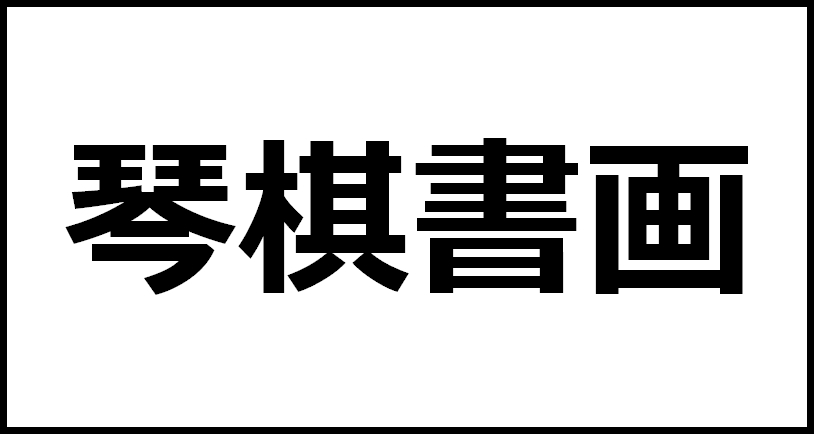琴棋書画について。四字熟語の琴棋書画の読み方や意味、英語や外国語での意味をまとめました。
琴棋書画について
琴棋書画の読み方・意味
| 四字熟語 | 琴棋書画 |
| 読み方 | きんきしょが |
| カタカナ読み | キンキショガ |
| ローマ字読み | kinkishoga |
| 読みの文字数 | 6文字読みの四字熟語 |
| 頭文字 | 「き」から始まる四字熟語 |
| 構成する文字 | ・書 ・棋 ・琴 ・画 |
| 意味 | 琴と碁と書と絵。中国で昔,四芸と称して,風流な人々の芸術的な遊びとされた。画題としても描かれた。 |
琴棋書画の意味(外国語)
琴棋書画の外国語での意味をまとめました。
| 英語 | Koto, go, calligraphy and painting. In ancient China, it was called four arts, and was regarded as an artistic pastime for elegant people. It was also drawn as a subject. |
| スペイン語 | Koto, vaya, caligrafía y pintura. En la antigua China, se llamaba cuatro artes y se consideraba un pasatiempo artístico para la gente elegante. También fue dibujado como tema. |
| イタリア語 | Koto, vai, calligrafia e pittura. Nell’antica Cina, era chiamato quattro arti ed era considerato un passatempo artistico per persone eleganti. È stato anche disegnato come soggetto. |
| ポルトガル語 | Koto, vá, caligrafia e pintura. Na China antiga, era chamado de quatro artes e era considerado um passatempo artístico para pessoas elegantes. Também foi desenhado como um assunto. |
| フランス語 | Koto, go, calligraphie et peinture. Dans la Chine ancienne, cela s’appelait les quatre arts et était considéré comme un passe-temps artistique pour les personnes élégantes. Il a également été dessiné comme sujet. |
| 中国語 | 江东,围棋,字画。 在中国古代,它被称为四艺,被视为文人雅士的艺术消遣。 它也被绘制为一个主题。 |
| 韓国語 | 고토와 바둑과 책과 그림. 중국에서 옛날, 4예라고 칭해, 풍류인 사람들의 예술적인 놀이로 되었다. 화제로도 그려졌다. |


